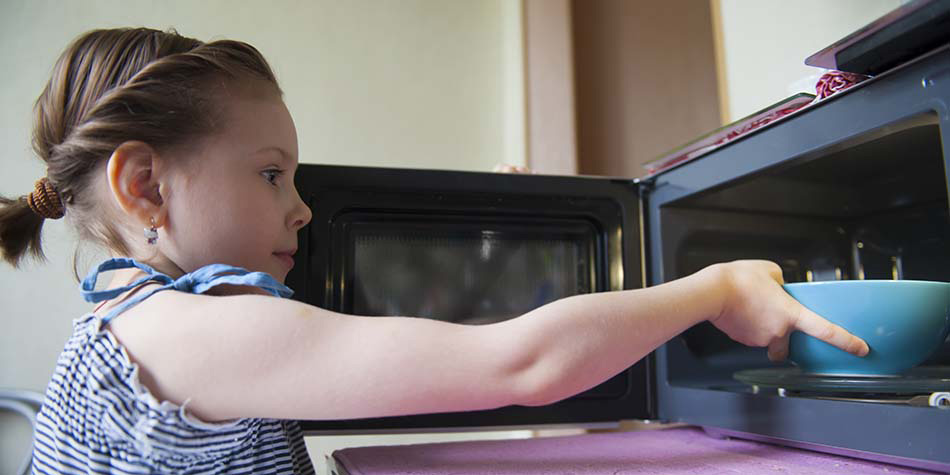
Babies and children are more susceptible to burn injuries than adolescents and adults. Because their skin is thinner and more delicate, they experience deeper burn injuries at lower temperatures and with shorter exposure times. A spilled cup of hot coffee will burn a larger percentage of their smaller bodies. The American Burn Association (ABA) reports that someone in the U.S. sustains a burn injury serious enough to require treatment approximately every minute. Here’s how to prevent your child from being burned by hot liquids.
Scalding burns from hot liquids
Scalding from hot baths, spilled soup, beverages and steam can severely injure your child. According to the ABA, 85% to 90% of scald burns are caused by cooking, drinking or serving hot liquids. Coffee, for example, is often served at 175 degrees.
Tait Olaveson, DO, Medical Director at EIRMC's Burn Center, says it only takes three seconds of exposure to a hot liquid at 140 degrees to develop a significant burn. Common causes of hot liquid burns include:
- Infants/babies/toddlers: Bath water that is too hot
- Older children: Heating liquids, such as ramen noodles, in the microwave
Not sure if your child’s burn needs medical attention? Call our 24/7 Consult-a-Nurse® line for free guidance and physician referrals.
Call Consult-a-Nurse at (208) 497-6167
How to prevent pediatric scalds
Dr. Olaveson reminds parents to always check their baby’s bath water before putting the baby in the tub. The ABA offers additional guidance for parents on avoiding scalding burns in children. Here are some of their tips:
DO:
- Set your water heater temperature to a maximum of 120 degrees (just below medium setting)
- Create a kid-free zone around stoves, ovens and other hot appliances
- Contain hot drinks in a travel mug with a tight-fitting lid and keep them well back from counter and table edges
- Use the back burners for cooking and heating liquids and keep pot handles turned where kids can’t reach
DON’T:
- Leave young children unattended (in the bathtub, in the kitchen, anywhere there might be a chance for them to get burned)
- Allow kids to turn on faucets or adjust water temperature themselves
- Set hot items on tabletops where children can reach and pull them down
- Allow appliance cords from slow cookers, deep fryers or coffeemakers to dangle where children or pets may reach them
When to take your child to the ER with a burn injury
A sure sign that bath water is too hot is if your baby’s skin turns red, says Dr. Olaveson. For minor burns, a clean washcloth soaked in cool water may help ease some of the pain. If your child’s skin is blistered, they should be evaluated by a medical professional, such as the pediatric emergency specialists at EIRMC’s Pediatric ER. For serious burns, your child may be transferred to our Burn Center, which has the facilities and expertise to treat the most complex burns in the tiniest patients.
$webqFacilityNumber
Need a Physician?